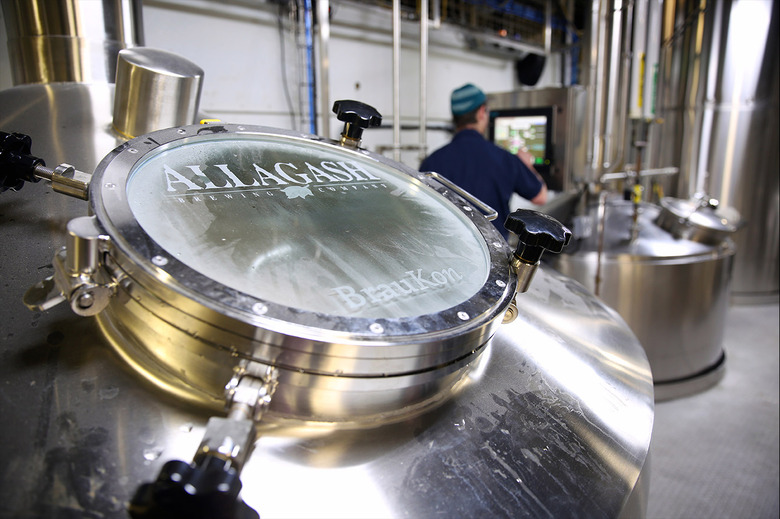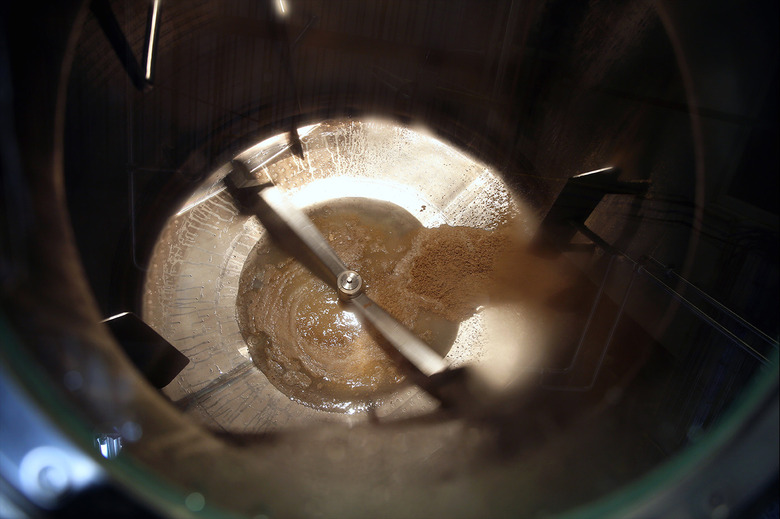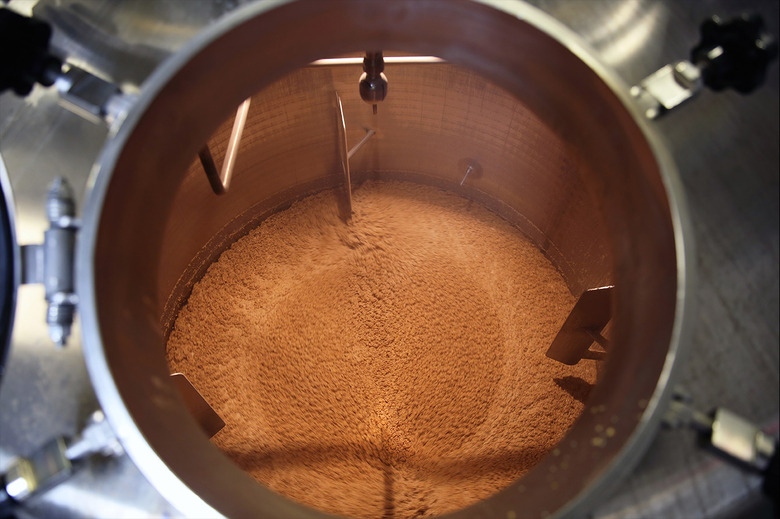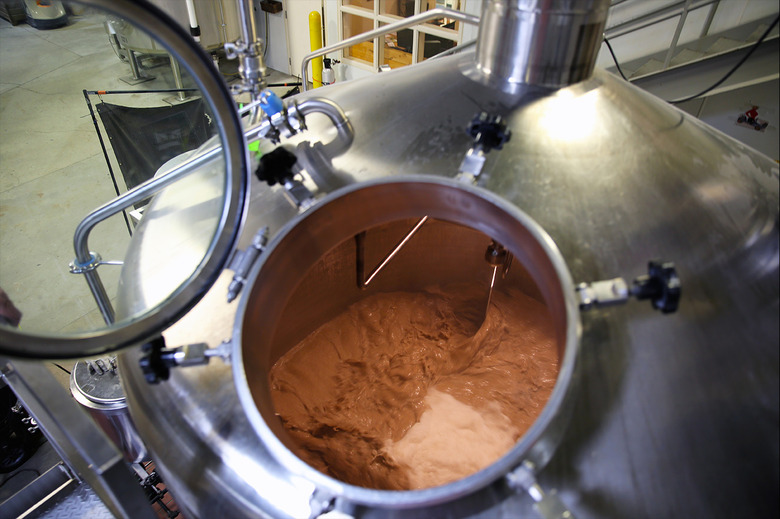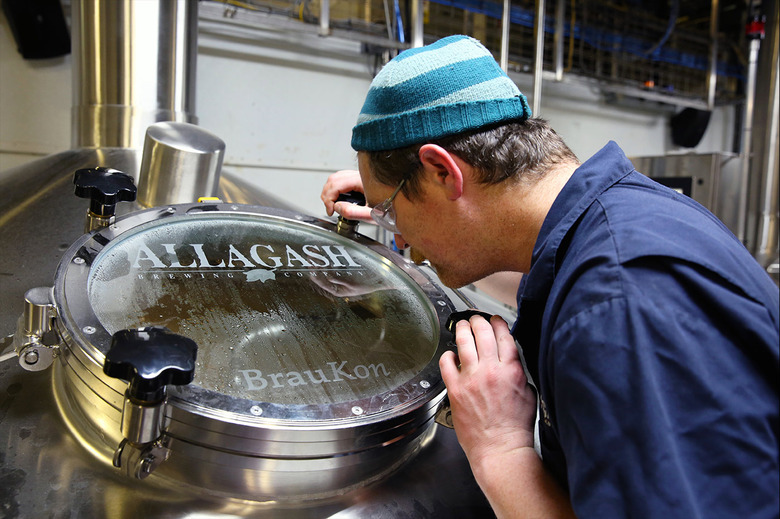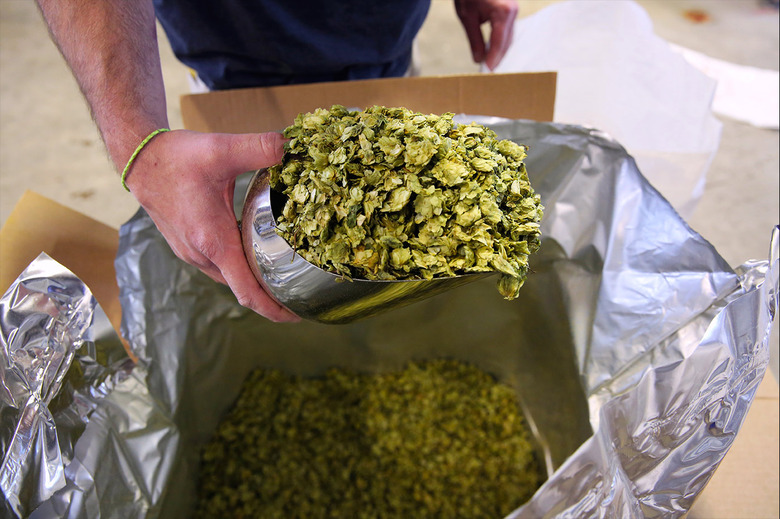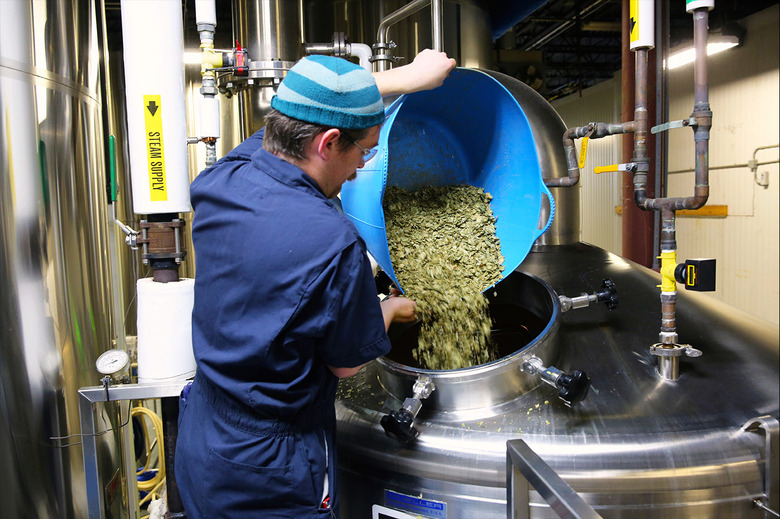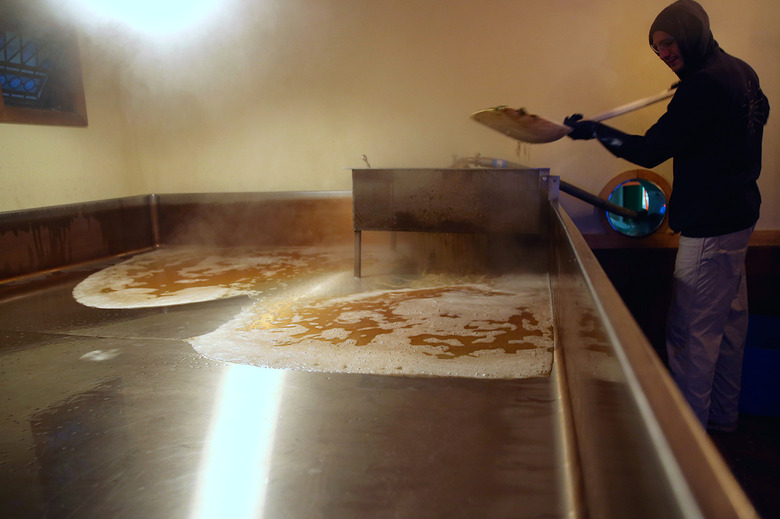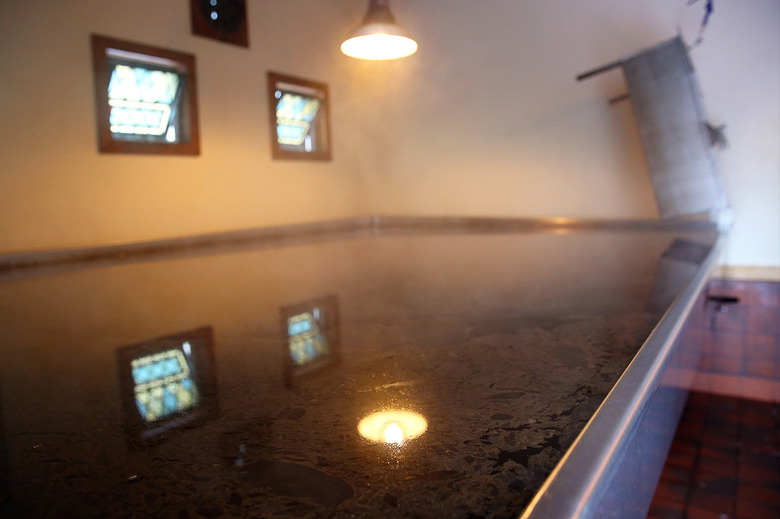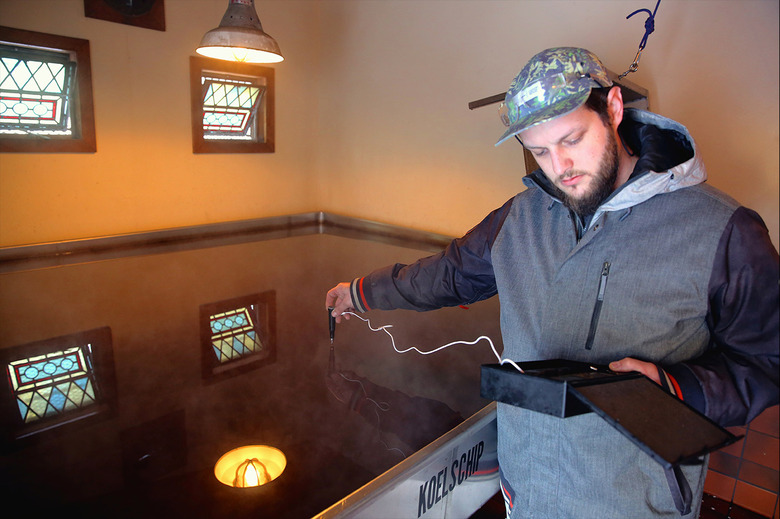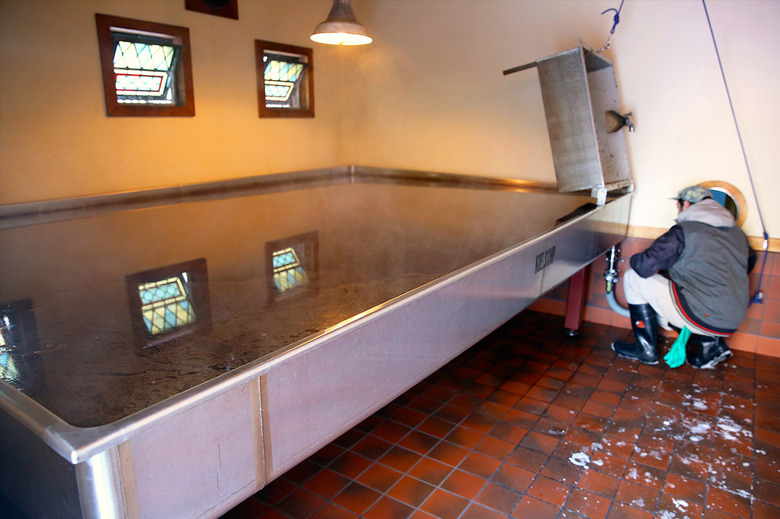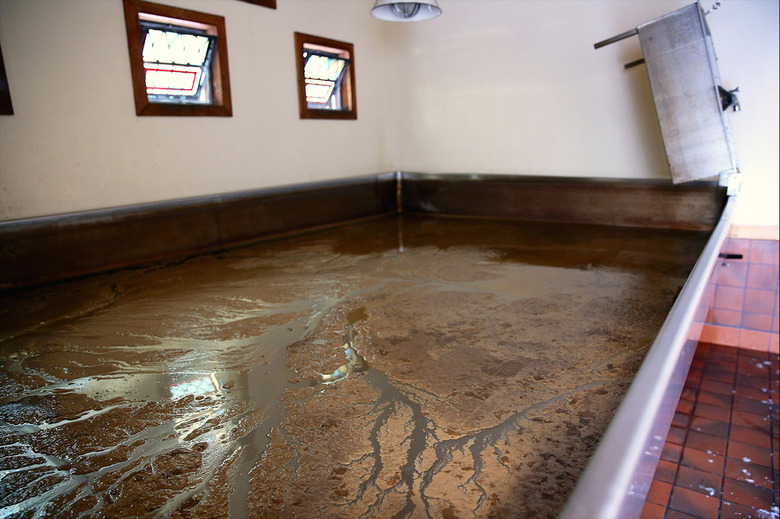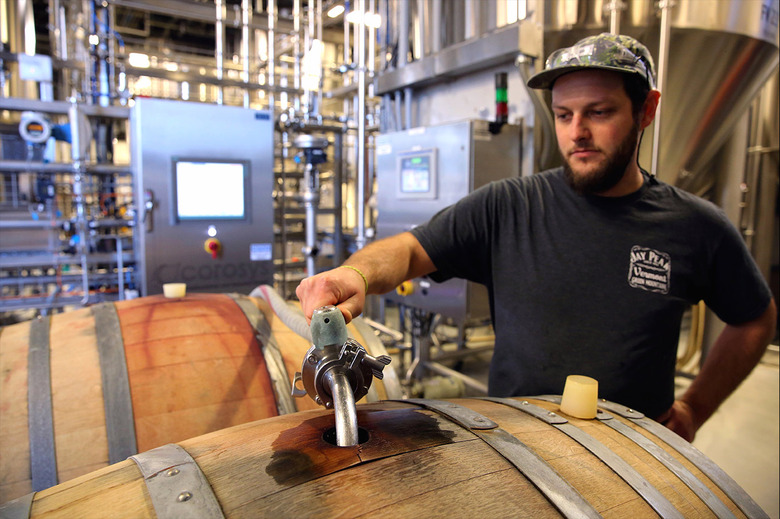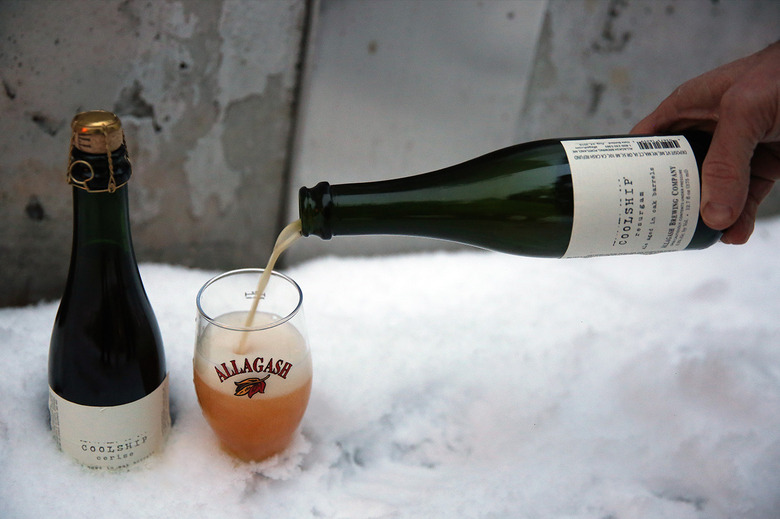An Inside Look At Coolship-Brewed Beers
Go behind the scenes of this bygone brewing process
The thought of bugs flying into a vat of something you drink is enough to make most people shudder. Yet when you're brewing beer in a coolship—a flat, open vessel in which cooling wort is naturally inoculated with ambient microorganisms—that's just part of the deal.
Allagash Brewing should know. The Portland, Maine, brewery does some 10 coolship brews a year, all within a specific window in winter. For the process to work, the weather has to be cold enough so that the beer is not overwhelmed with microbes and wild yeast. The annual result is a few hundred barrels of what will either become a Belgian-inspired lambic (young, spontaneously fermented ale), like the cherry-aged Coolship Cerise, or a gueuze-style beer (a blend of one-, two- and three-year-old lambics), like the Coolship Resurgam.
RELATED 5 Unexpected but Awesome Craft Beer Destinations "
Today, only around two-dozen other American breweries have coolships, but the number has been growing steadily since 2008, when Allagash became the first commercial American brewery to build one. Before then, the tradition was limited to Belgium, where breweries, such as Brasserie Cantillon in Brussels, have been spontaneously fermenting beer in open vats for centuries (in Cantillon's case, since 1900). Allagash and old-school Belgian brewmasters have had a tremendous influence on U.S. beer culture; beyond the nod to history and experimentation, though, a larger local and artisanal trend seems to be inspiring American coolship brewing as well.
"Many brewers are interested in beers that are uniquely tied to time and place, and 100 percent spontaneous fermentation is a great way to go about this," Jeffrey Stuffings, founder of Jester King Brewery, explains. The Austin, Texas, brewery, best known for its wild ales, is now one of the largest producers of coolship-brewed beer in the country.
Dave Linari, assistant brewer for OEC Brewing in Oxford, Connecticut, agrees. "It adds to our house terroir," Linari says of their coolship, invoking a term usually used by winemakers when they reference the climate, soil and other local features that influence flavors and aromas. "Wild fermentation also allows for more creativity than clean fermentation techniques, and opens up a world of flavors and aromas," he adds. With coolship brewing, beer gains complexity as it ages, picking up flavors from the liquid the barrel previously held, encountering microorganisms in the wood, and slowly oxidizing over time.
Although coolships are simple to use and clean, exposed beer can spoil much more easily, which means brewers must be vigilant in tending to their product. Yet the extra time and attention is a source of personal pride for many coolship brewers, who would much prefer this method over quicker, cheaper techniques like kettle souring (manually pitching live bacteria, such as Lactobacillus, in a steel-brew kettle). "In my experience, there's just no shortcut when it comes to creating the complexity you get from spontaneous fermentation with wild yeast and bacteria," Stuffings explains. "The difference in flavor, aroma, mouthfeel is night and day."
As a fan of coolship beers, I wanted to get a better understanding of the process. So I headed to Allagash to coolship-brew with their team, tagging along from the very start of mash-in—the process of combining and heating grain and water—to the moment the beer is poured into the barrels for aging. Here's the play-by-play.
Monday, 8 A.M.
I arrive at Allagash and find brewhouse manager Branch Rothschild already finishing up a batch of House Beer that he started before sunrise. (Note to self: Never become a brewer.) He's just about ready to begin mash-in for the coolship beer: He adds hot water to crushed malted barley and raw wheat in order to convert complex starches into simple sugars that can be fermented. Branch's "step mash" approach—which introduces multiple infusions of increasingly hot water between rests—extracts the starches, tannins and polyphenols you don't typically want in a beer. In this case, such compounds act as complex food sources for microbes.
8:15 A.M.
Although they differ in aging and blending techniques, all of the beers in Allagash's Coolship lineup start off the same: Some 1,050 pounds of grain (60 percent pilsner base malt and 40 percent white, unmalted wheat) are slowly dumped into the mash tun. For any other beer, target starting mash temperature would be 150°; however, here, the first target is 115°. The mash is much thicker than usual, so the mix paddle is working overtime.
8:41 A.M.
It's time for infusion number one. Brewmaster Jason Perkins adds the first pour of 195° water. Every 15 minutes, we infuse with hotter and hotter water, slowly raising the temperature of the entire concoction with rests in between to stabilize the specific levels of acid, protein or saccharification.
9:38 A.M.
The mash, now a liquid, kind of looks like pallid Yoo-hoo. About three-quarters of the mixture is put into the lauter tun—a vessel used to separate liquid from grain—where it will rest at 150° to preserve enzymes. The remaining quarter is decocted, as in, the temperature is raised to extract a bit more from the mash.
10:15 A.M.
Finally, the remaining quarter in the mash mixer vessel is added to the lauter tun. We rinse the now-empty mash mixer vessel with hot water that will soon be used as the last infusion to bring the mash to 212°. It will take about two hours to sparge (add water to) and lauter (pull liquid out of) the mash, after which, we will have our wort, a sugary liquid extract that can be fermented and turned into beer.
11 A.M.
While we're about 45 minutes into sparging and lautering, Perkins weighs out some aged hops, putting them into buckets.
12:28 P.M.
At last, the wort has been fully lautered and is drained from the lauter tun into a brew kettle, where it will be heated once again. We add the hops to the wort and leave the mixture to boil for a very long time—three and a half hours, in fact. A typical boil lasts only an hour or two to preserve the flavor and aroma of the hops; with coolship brewing, however, the goal is to boil off the cheesy odor of the aged hops, which are being used only for their preservative quality.
4:15 P.M.
At long last, the boiled wort is ready to cool off in—where else?—the coolship. Rothschild and I pump it through pipes into the open vessel, which sits in an outdoor shack. The cold temperature and hot liquid vapor quickly combine to create a crazy-thick fog that persists as the coolship is filled, a process that will take about 45 minutes. As dusk begins to fall, rays of brewery light bounce off the shack's stained glass and reflect onto the snow. Being bathed in an orange glow while witnessing the hallowed coolship do its thing is quite magical indeed.
Tuesday, 7:45 A.M.
I'm awakened by a phone call from marketing director Jeff Pillet-Shore, who tells me that because the outside temperature dropped lower than expected last night, we'll need to empty the coolship a bit earlier than planned, before the temperature of the liquid drops too low. I urgently hop in an Uber and make my way toward the brewery like a coolship paramedic. If only I had an emergency siren . . .
8:40 A.M.
When I arrive, senior brewer Evan Culver is taking the temperature of the cooled wort, which sits serenely still in the metal vat. The liquid is 66°: a little cooler than Allagash's ideal, but well within the general range (64° to 70°) that's considered appropriate for emptying a coolship.
8:45 A.M.
Culver hooks up a hose. It should take about 45 minutes to drain the coolship completely into a holding tank.
9:30 A.M.
Having drained the coolship, Culver takes a sample of the beer to the lab. He checks its gravity, or sugar content, which reads 11 degrees Plato. This measurement will translate to around 6 percent ABV when fermentation is complete, which is right on the money.
9:45 A.M.
Culver begins transferring the liquid into neutral wine barrels that have been steamed and rinsed. Now we only need wait a year or two—or three!—to taste the fruits of our labor.
Tuesday, 10:30 A.M.
Good thing we have last year's bottling of Coolship Resurgam to enjoy in the meantime.
Photos: Courtesy of Ethan Fixell

